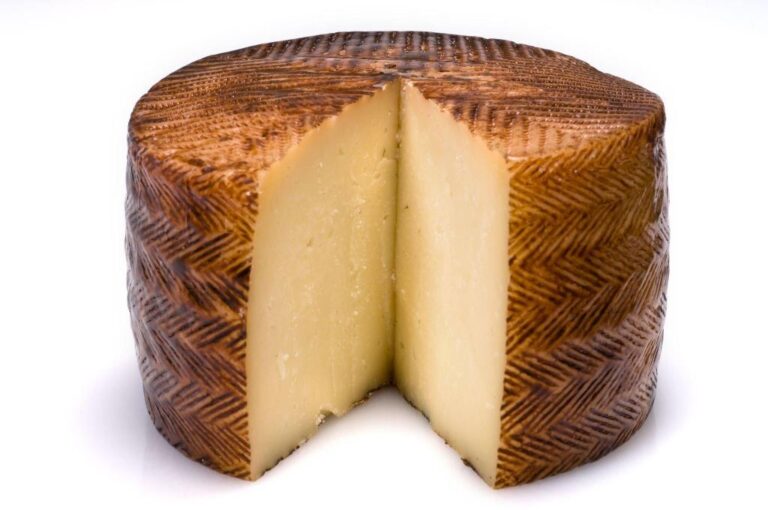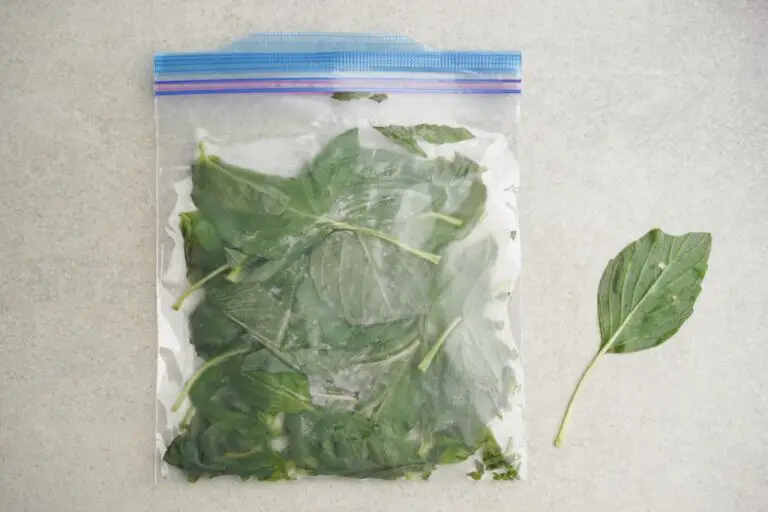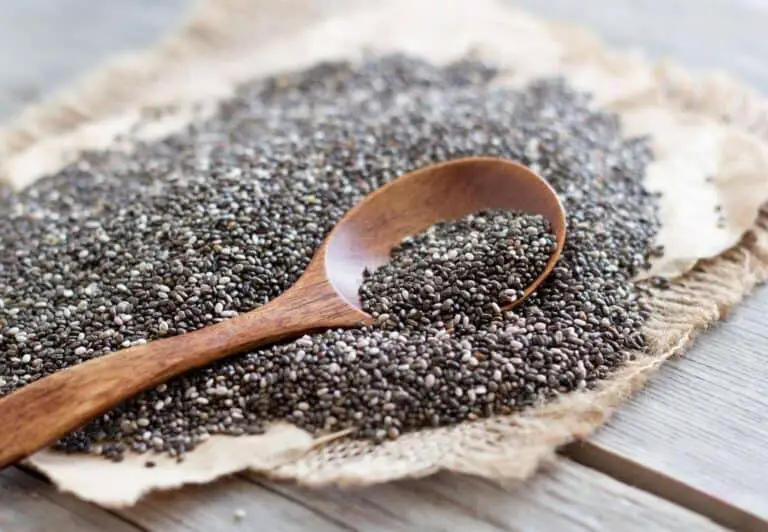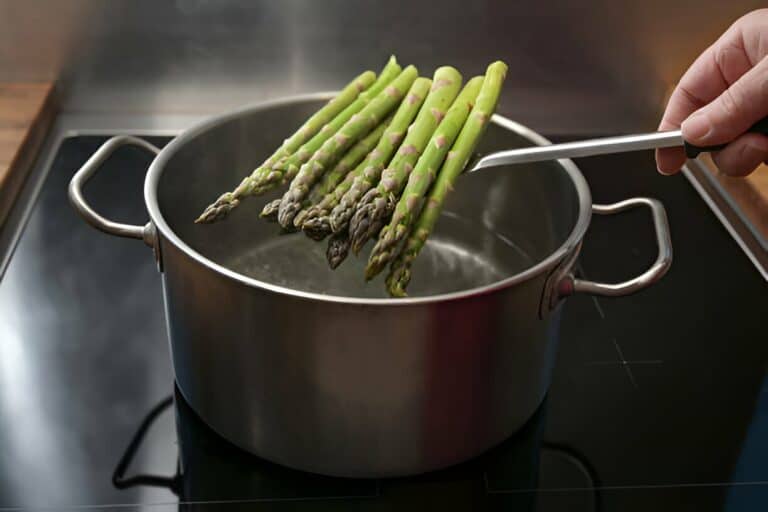Chia Seeds vs Sabja Seeds: A Comparison of Nutritional Benefits and Uses
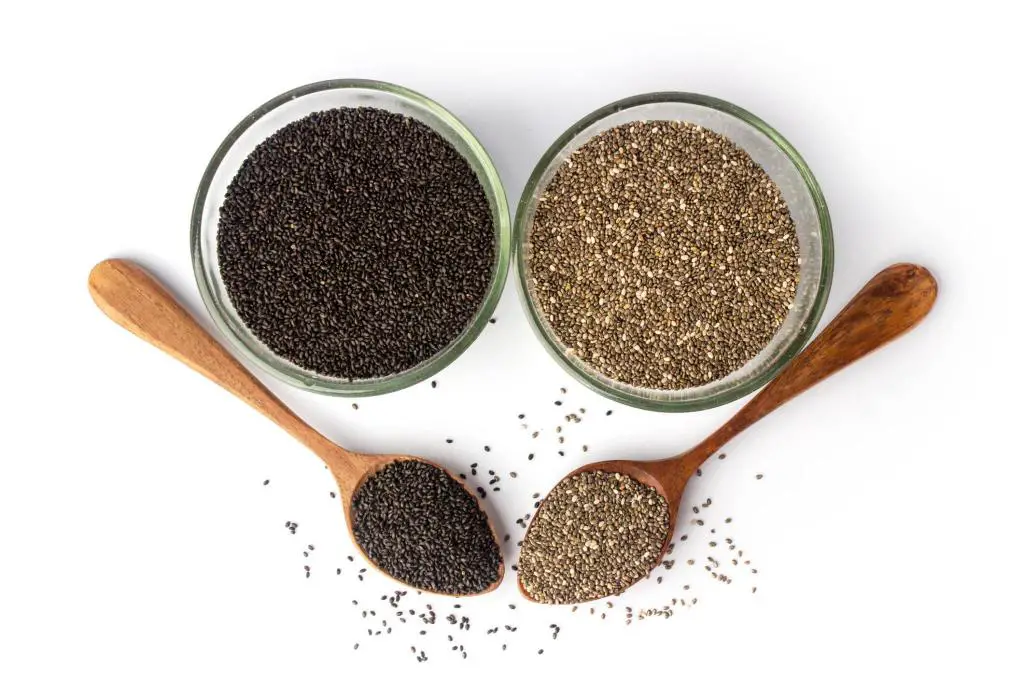
Chia seeds and sabja (or basil) seeds have gained significant popularity in recent years due to their nutritional benefits and versatility in culinary usage. People who care about their health and want to improve their overall health naturally eat a lot of these tiny nutritional powerhouses.
Chia seeds, native to Mexico, were a staple food for ancient Mayan and Aztec civilizations. Chia seeds are often called a “superfood” because they are high in fiber, protein, omega-3 fatty acids, antioxidants, vitamins, and minerals like calcium and magnesium. They are said to give you more energy, help with digestion, help you lose weight, reduce inflammation, improve heart health, and so on.
Sabja seeds are derived from the sweet basil plant, which is commonly used in cooking across various cuisines worldwide. These black, oval-shaped wonders are also called tukmaria or falooda seeds in some parts of Asia and Europe. They are full of healthy nutrients like iron, magnesium, fiber, and essential fatty acids.
There are some differences between chia seeds and sabja (basil) seeds that you should know about if you want to add them to your diet. This article will explain these differences in detail.
Understanding the Basics ov Chia Seeds and Sabja Seeds
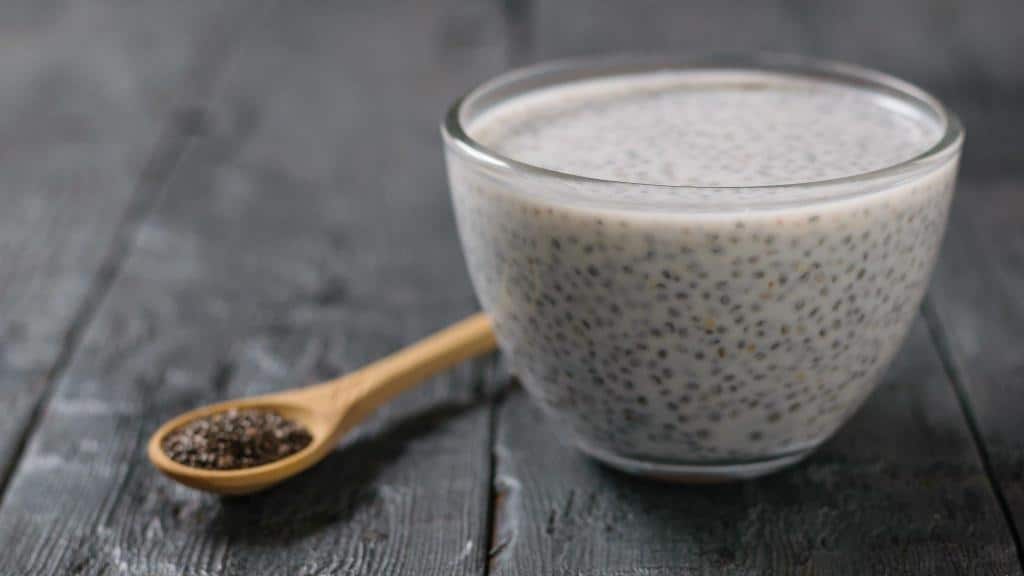
Imagine a table where the spotlight is on Chia seeds. With a rich omega-3 fatty acid content, these tiny seeds offer a robust punch of essential nutrients—fiber, protein, and antioxidants. Dive into the world of Chia’s gel-forming ability, creating a unique culinary and nutritional experience.
Shift focus to Sabja seeds, the lesser-known sibling. Picture a list detailing Sabja’s nutrient portfolio—iron, magnesium, and antioxidants that contribute to overall health.
Explore the fascinating way these seeds swell when soaked, transforming into gelatinous beads, elevating both texture and nutritional content.
Chia Seeds:
Chia seeds, derived from the Salvia hispanica plant, have been revered for centuries for their energy-boosting properties. Packed with omega-3 fatty acids, fiber, and antioxidants, Chia seeds make a compelling addition to any diet.
Sabja Seeds:
On the other hand, Sabja seeds, also known as basil seeds or Falooda seeds, hail from the sweet basil plant (Ocimum basilicum). These seeds, when soaked, exhibit a gelatinous coating, similar to Chia seeds. Rich in essential nutrients, Sabja seeds offer a different set of health benefits.
Nutritional Composition: Chia Seeds v Sabja Seed
When it comes to nutrition, both chia seeds and sabja seeds offer a wide array of health-promoting nutrients. Chia seeds are particularly known for their high fiber content, with just one ounce (28 grams) providing an impressive 11 grams of dietary fiber.
This makes them an excellent choice for those looking to increase their daily fiber intake, which plays a crucial role in maintaining digestive health and preventing constipation.
In addition to fiber, chia seeds also boast a good amount of omega-3 fatty acids. These essential fats have been linked to numerous health benefits, including reduced inflammation levels and improved brain function.
What sets chia seeds apart from many other plant-based sources is that they provide the omega-3 fat called alpha-linolenic acid (ALA). The body transforms ALA into the omega-3s eicosapentaenoic acid (EPA) and docosahexaenoic acid (DHA), both of which are primarily present in fish oil.
Sabja seeds also pack quite the nutritional punch, especially when it comes to their rich fiber content. With roughly 25% soluble fibers like pectin and mucilage, sabja seeds swell up when soaked in water or liquid – making them fantastic for promoting feelings of fullness and aiding weight management efforts.
These tiny blackish-brown specks are not only high in insoluble dietary fibers but also contain trace amounts of several important micronutrients like calcium, magnesium, iron vitamin A, and antioxidants that play various roles in supporting overall vitality.
Both chia seeds and sabja seeds offer some unique nutritional benefits that can be incorporated into your diet to boost your overall well-being.
| Nutrient | Chia Seeds (per 1 oz) | Sabja Seeds (per 1 oz) |
| Calories | 138 | 43 |
| Fiber | 10.6g | 7.6g |
| Protein | 4.4g | 2.2g |
| Omega-3 Fatty Acids | 5.1g | 0.5g |
| Calcium | 177mg | 204mg |
| Iron | 1.6mg | 6.8mg |
Chia seeds take the lead in terms of omega-3 fatty acids, making them an excellent choice for heart health. Meanwhile, Sabja seeds boast a higher iron content, making them a potential ally for those combating iron-deficiency anemia.
Health Benefits
While both chia and sabja seeds provide valuable nutritional profiles, it is important to note that individual needs may vary. It is always advisable to consult a healthcare professional before incorporating any new food into your diet to ensure it aligns with your specific health goals and requirements.
Chia Seeds:
- Heart Health: Omega-3 fatty acids in Chia seeds contribute to heart health by reducing inflammation and lowering blood pressure.
- Digestive Wellness: The high fiber content aids in digestion and promotes a healthy gut, preventing constipation.
- Weight Management: Chia seeds, when mixed with liquids, form a gel-like substance that can help control appetite, potentially aiding in weight management.
Sabja Seeds:
- Cooling Properties: In traditional medicine, Sabja seeds are believed to have cooling effects on the body, making them popular in summer drinks and desserts.
- Blood Sugar Regulation: The soluble fiber in Sabja seeds can slow down the absorption of sugar, potentially assisting in managing blood sugar levels.
- Rich Iron Source: Sabja seeds can be a valuable addition to vegetarian and vegan diets, offering a plant-based source of iron.
| Also see: The Benefits of Chia Seeds for Vitamin D Absorption |
Culinary Versatility
Chia Seeds:
- Smoothies and Yogurts:
- Sprinkle Chia seeds on smoothies or yogurt for a nutrient boost and a delightful crunch.
- Blend Chia seeds into smoothies to add thickness and a subtle texture.
- Mix Chia seeds with yogurt, fresh fruits, and granola for a wholesome and satisfying parfait.
- Puddings:
- Create a healthy and delicious chia pudding by combining the seeds with your choice of milk and flavorings.
- Experiment with different milk alternatives such as almond or coconut milk to customize the flavor of your Chia pudding.
- Layer Chia pudding with fresh fruit compote or nuts for added taste and visual appeal.
- Baking:
- Incorporate Chia seeds into your baking recipes for an extra nutritional boost.
- Add Chia seeds to muffins, pancakes, or bread dough to enhance the fiber and omega-3 content.
- Use Chia gel (Chia seeds soaked in water) as an egg substitute in vegan baking recipes.
- Salads and Dressings:
- Sprinkle Chia seeds on top of salads for a crunchy element and added nutrition.
- Mix Chia seeds into salad dressings to thicken and enrich them with omega-3 fatty acids.
- Create a Chia vinaigrette by combining olive oil, balsamic vinegar, and soaked Chia seeds.
- Snacks:
- Make Chia energy bars or balls by combining the seeds with dried fruits, nuts, and a sweetener.
- Incorporate Chia seeds into homemade granola bars for a healthy snack option.
- Mix Chia seeds with popcorn for a unique and nutritious twist on a classic snack.
- Hydration:
- Prepare Chia-infused drinks by adding soaked Chia seeds to water, herbal teas, or fruit juices.
- Experiment with different flavor combinations by infusing Chia seeds with citrus fruits or herbs.
- Enjoy a refreshing Chia seed lemonade by combining lemon juice, Chia seeds, and sweetener.
- Soups and Stews:
- Thicken soups and stews by stirring in Chia seeds during the cooking process.
- Use Chia gel as a natural thickening agent for sauces and gravies.
- Sprinkle Chia seeds on top of hot soups just before serving for a nutritious garnish.
- Dairy-Free Alternatives:
- Create dairy-free Chia seed milk by blending soaked Chia seeds with water and straining.
- Use Chia seeds as a binding agent in vegan desserts, replacing eggs or gelatin.
- Incorporate Chia seeds into plant-based ice creams for added texture and nutritional value.
| Read: Chia Seeds vs Poppy Seeds: The Differencess |
Sabja Seeds:
- Falooda:
- A popular ingredient in the Indian dessert Falooda, Sabja seeds add a unique texture and nutritional element.
- Combine Sabja seeds with vermicelli, rose syrup, and ice cream to create a traditional and delightful Falooda.
- Experiment with different fruit flavors and toppings to customize your Sabja seed-infused Falooda.
- Beverages:
- Infuse Sabja seeds into beverages like lemonades or iced teas for a refreshing twist.
- Create a classic Sabja seed lemonade by combining lemon juice, Sabja seeds, and a touch of sweetness.
- Experiment with herbal teas and Sabja seeds for a unique and healthful infusion.
- Mocktails and Cocktails:
- Elevate mocktails and cocktails by incorporating Sabja seeds for a visually appealing and textured experience.
- Create a Sabja seed-infused mojito by muddling mint leaves, lime, and Sabja seeds together.
- Experiment with different fruit-based cocktails, adding Sabja seeds for a burst of flavor and nutrition.
- Desserts:
- Sprinkle Sabja seeds on top of desserts like puddings, custards, or fruit salads for added texture.
- Use Sabja seeds in the preparation of Asian-style sweet soups and dessert porridges.
- Combine Sabja seeds with coconut milk and tropical fruits for a refreshing and exotic dessert.
- Yogurt Parfaits:
- Layer Sabja seeds with yogurt, granola, and fresh fruits to create a nutritious and satisfying parfait.
- Experiment with different yogurt flavors and textures to enhance the overall taste and mouthfeel.
- Add a drizzle of honey or agave syrup for sweetness and depth of flavor.
- Smoothie Bowls:
- Sprinkle Sabja seeds on top of smoothie bowls to add a pop of color, crunch, and nutrition.
- Combine Sabja seeds with tropical fruit smoothie bowls for a refreshing and tropical flavor profile.
- Customize your smoothie bowl with additional toppings like nuts, seeds, and fresh berries.
- Ice Cream Toppings:
- Use Sabja seeds as a unique and nutritious topping for ice cream or frozen yogurt.
- Create a DIY ice cream bar with various toppings, including Sabja seeds, for a fun and interactive dessert experience.
- Experiment with contrasting flavors and textures by pairing Sabja seeds with different ice cream varieties.
- Jellies and Puddings:
- Incorporate Sabja seeds into the making of fruit jellies and puddings for added texture and nutritional benefits.
- Combine Sabja seeds with agar-agar or gelatin to create puddings or jellies
| Related: Can You Eat Dry Chia Seeds in Yogurt? |
Side Effects and Precautions
While both chia seeds and sabja seeds are generally safe for consumption, it is important to be aware of potential side effects and take necessary precautions.
Some individuals may experience common allergenic reactions, such as itching, hives, or swelling, after consuming these seeds. If you have a known allergy to basil or other herbs in the Lamiaceae family, it is advisable to avoid sabja seeds altogether.
Moreover, both chia and sabja seeds have a high fiber content, which can cause digestive discomfort in some people. The soluble fiber in these seeds absorbs water and expands in the stomach, which might lead to bloating or gas if consumed in excessive amounts. It is recommended to start with small portions and gradually increase intake while monitoring your body’s response.
Additionally, pregnant women and breastfeeding individuals should exercise caution when consuming large quantities of either seed. While there isn’t substantial scientific evidence suggesting harm during pregnancy or lactation periods, it is best to consult with a healthcare professional for personalized guidance.
By being mindful of any potential allergies or digestive issues that could arise from consuming chia seeds or sabja seeds excessively, you can enjoy their nutritional benefits without experiencing any adverse effects on your health.
Conclusion
In conclusion, chia seeds and sabja seeds both offer a plethora of nutritional benefits and can be valuable additions to a healthy diet. However, they do have some key differences in terms of their appearance, taste, and culinary uses.
Chia seeds are small, oval-shaped seeds that have a neutral flavor profile, making them versatile for various recipes. On the other hand, sabja or basil seeds are tiny black tear-shaped beads with a mild nutty flavor that are often used in drinks and desserts.
While both seeds provide an excellent source of fiber, protein, omega-3 fatty acids, and essential minerals such as calcium and magnesium, it is important to consider personal preferences when choosing between them. If you prefer a milder taste with versatility in cooking applications such as baking or adding to smoothies or oatmeal bowls, chia seeds may be a better choice for you.
However, if you enjoy experimenting with unique textures in your beverages or seek relief from digestive issues like bloating or constipation, then incorporating sabja seeds into your routine could prove beneficial.
Ultimately, selecting either chia seeds or sabja (basil) Seeds should be based on personal preference regarding taste/texture along with the specific health goals one aims at achieving through seed intake. Be sure to consult with a healthcare professional before making any significant dietary changes!

